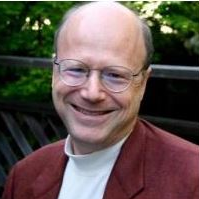Religion and Immigration
A special issue of Religions (ISSN 2077-1444).
Deadline for manuscript submissions: closed (29 February 2024) | Viewed by 3661
Special Issue Editors
Interests: European intellectual history; Jewish studies
Special Issues, Collections and Topics in MDPI journals
Interests: Jewish studies; religion
Interests: Jewish studies; religion
Special Issue Information
Immigration and religion are usually researched from the perspective of disruption and alienation. In this volume, we aim to examine the constructive and palliative influence of religion. This is a subject that is worth further study, it is sorely needed, not only academically but for our societies as well.
Dear Colleagues,
In the aftermath of the refugee crisis that shook European societies in the last decade, and the divisive debate on migration to the United States, cultural and religious conflict has increased, and extremist politics threaten to undermine democratic cultures and processes. Yet, religious communities also extend hospitality to immigrants and often lead the way in cultural and civic integration. Migrant religious leaders provide their communities with a sense of continuity of tradition, and local religious activists provide bridges to new societies. The multifaceted roles religion plays in immigration are at the center of this conference.
Immigration has radically reshaped the global religious landscape throughout history. As religions enter new and unfamiliar territories, new religious, linguistic and cultural connections form, and questions of religious change, conversion and secularization become acute. Theologies are transformed. Immigrants retain religious leadership or develop a new one, and both can enhance or disrupt integration. Religions often provide immigrants with a major channel for cautious adoption of local habitus, norms and ideas, and negotiation of religious and cultural ideas into the host culture. They are a medium for major cultural encounters.
We are pleased to invite you to participate in this Special Issue, which will explore the role of religion in immigration from a post-secular perspective; that is, with the assumption that religions are key social players even in Western “secular” societies, and that they should be explored both institutionally and as diverse culture. The aim is to collect at least 10 articles, and the Special Issue may be printed in book form if this number is reached.
This Special Issue aims to cover the following topics: religious leaders as sources/purveyors of continuity; theologians as cultural bridge builders; religious activists as socializing agents; religion’s impact on integration: case studies; religious activism, religious institutions and immigration; religious communities facilitating integration; religious organizations and refugees; religious sensibilities and humanitarian ideologies; religious organizations, lobbying, and immigration policy making. This list is not exhaustive, and we will be happy to consider other relevant topics.
Original research articles and reviews are welcome. Research areas may include (but are not limited to) the following: history, theology, sociology, anthropology, political science, and interdisciplinary studies.
We look forward to receiving your contributions.
Prof. Dr. Malachi Hacohen
Prof. Dr. Hilda Nissimi
Dr. Zohr Maor
Prof. Dr. Dorottya Nagy
Guest Editors
Manuscript Submission Information
Manuscripts should be submitted online at www.mdpi.com by registering and logging in to this website. Once you are registered, click here to go to the submission form. Manuscripts can be submitted until the deadline. All submissions that pass pre-check are peer-reviewed. Accepted papers will be published continuously in the journal (as soon as accepted) and will be listed together on the special issue website. Research articles, review articles as well as short communications are invited. For planned papers, a title and short abstract (about 100 words) can be sent to the Editorial Office for announcement on this website.
Submitted manuscripts should not have been published previously, nor be under consideration for publication elsewhere (except conference proceedings papers). All manuscripts are thoroughly refereed through a double-blind peer-review process. A guide for authors and other relevant information for submission of manuscripts is available on the Instructions for Authors page. Religions is an international peer-reviewed open access monthly journal published by MDPI.
Please visit the Instructions for Authors page before submitting a manuscript. The Article Processing Charge (APC) for publication in this open access journal is 1800 CHF (Swiss Francs). Submitted papers should be well formatted and use good English. Authors may use MDPI's English editing service prior to publication or during author revisions.
Keywords
- immigration
- leadership
- religious organizations
- integration
- theology
- religious leadership
- women
- redemption
- exile






